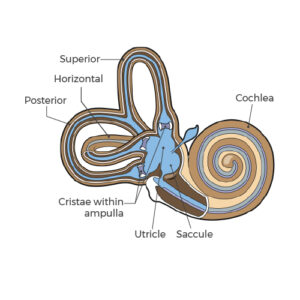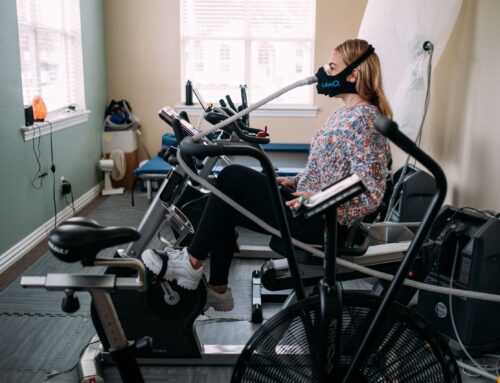Navigating Vertigo: Understanding Diagnosis and Physical Therapy Treatment
Introduction:
Have you ever suffered from vertigo or are familiar with the diagnosis? In the simplest terms, it is the miserable feeling causing your world to spin around you and sometimes leads to the feeling of wanting to vomit. If we want to get technical, vertigo is a sensation of spinning or dizziness that can be disorienting and debilitating. Whether it’s triggered by certain movements or occurs suddenly, the condition can significantly impact one’s quality of life. However, with advancements in healthcare and accurate diagnosis, managing vertigo has become increasingly effective. Many people suffering are unaware about physical therapy and chiropractic treatment techniques that can help manage and cure vertigo in as little as one visit.

The feeling of vertigo
Understanding Vertigo:
Vertigo isn’t a condition in itself but rather a symptom of an underlying issue. It often stems from
disturbances in the inner ear or the vestibular system, which is responsible for balance and spatial orientation. These disturbances can be caused by various factors, including benign paroxysmal positional vertigo (BPPV), Meniere’s disease, vestibular neuritis, or labyrinthitis.
Diagnosis:
Accurate diagnosis is crucial for effective treatment. A healthcare provider, which can be performed by a physical therapist or chiropractor, will conduct a comprehensive evaluation to determine the root cause of your dizziness. This may include a physical examination, medical history review, and specialized tests such as the Dix-Hallpike maneuver to diagnose BPPV or vestibular function tests to assess inner ear function.
The most common cause of acute vertigo is BPPV. BPPV is a fluid disruption of the inner ear when crystals dislodge from their natural position. This disruption causes severe dizziness or “spinning” when turning the head in a specific direction. It is important to consult a medical professional as proper diagnosis is crucial in effective treatment for the quickest results.

Anatomical View of the Semi-circular Canals
Physical Therapy and Chiropractic Treatment:
Physical therapy plays a pivotal role in managing vertigo, aiming to improve balance, reduce dizziness, and enhance overall quality of life. Here are some common physical therapy and chiropractic treatments used for vertigo:
Canalith Repositioning Maneuvers (Epley Maneuver):
For individuals diagnosed with BPPV, canalith repositioning maneuvers like the Epley maneuver are highly effective. These maneuvers involve a series of head and body movements designed to reposition displaced calcium carbonate crystals (otoconia) within the inner ear, alleviating symptoms of vertigo. Full transparency, this is not a very pleasant experience for the 5-10 minutes it may take for the treatment. However, resolution of symptoms typically occurs within hours of the treatment. These can be performed by both physical therapists and chiropractors.
Vestibular Rehabilitation Therapy (VRT):
VRT is a specialized form of physical therapy tailored to individuals with vestibular disorders. Through a series of exercises and maneuvers, VRT aims to promote central nervous system compensation for inner ear deficits, improve gaze stability, and enhance balance and postural control.
Balance Training:
3 components of the balance system include vision, foot contact with ground, and the vestibular system. With any sort of vestibular compromise, balance can be significantly effected. Balance training exercises focus on improving proprioception, muscle strength, and coordination to enhance overall balance and stability. These exercises may include standing on unstable surfaces, performing tandem stance or single-leg stance exercises, and practicing dynamic movements.
Gaze Stabilization Exercises:
Gaze stabilization exercises aim to improve visual acuity and reduce symptoms of dizziness associated with head movements. These exercises often involve tracking moving objects or performing head movements while maintaining focus on a stationary object.
Chiropractic Adjustment:
Chiropractic adjustments may help with vertigo by aligning the spine, particularly in the cervical region, which can affect the function of the nervous system, including the vestibular system responsible for balance. By correcting spinal misalignments (subluxations), chiropractic care aims to improve nerve function, blood flow to the brain, and reduce muscle tension in the neck and upper back. These improvements can potentially alleviate vertigo symptoms by addressing underlying issues that contribute to imbalance and spatial disorientation.
Lifestyle Modifications:
In addition to physical therapy interventions, making lifestyle modifications can also help manage vertigo symptoms. This may include avoiding triggers such as sudden head movements, staying hydrated, getting an adequate amount of rest, and managing stress levels.
Conclusion:
Vertigo can significantly impact daily life, but with accurate diagnosis and targeted treatment, individuals can effectively manage symptoms and regain control over their balance and stability. By incorporating canalith repositioning maneuvers, vestibular rehabilitation therapy, balance training, gaze stabilization exercises, and lifestyle modifications, individuals can navigate through vertigo with confidence and reclaim their quality of life. If you are currently or have ever experienced similar symptoms, we would love to help! Through chiropractic and physical therapy care, our goal is for you to regain full function as quickly as possible.


